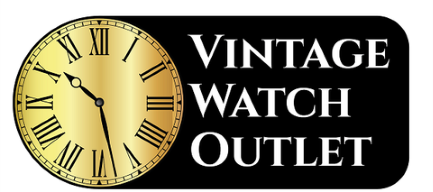May 07 2019

This vintage 1966 Rolex GMT-Master is far from perfect. The painted markers may be discolored, cracked or, at the very least, lack their luminescence. The rotating bezel might not ratchet; the acrylic crystal is likely scratched. Set alongside a modern Rolex GMT-Master II, with its ceramic ratcheting bezel, sapphire crystal, solid bracelet and 100-meter water resistance, there shouldn’t be much of a contest. The new watch is the one to get, right? Wrong.
Vintage watch buying is enjoying incredible popularity, thanks to a community of savvy collectors, great internet resources for both learning about and buying old watches, and a nostalgic yearning for quality products from an era before planned obsolescence. Old watches also represent great value, the chance to wear a piece of history and, if you’re lucky, a good investment. Not to mention, they just look cool.
Why Vintage?
If you have $2,000 to spend, you could drive down to Bloomingdale’s and walk out with a quartz TAG Heuer or Longines that would serve you well for many years. Or you could buy a 1962 LeCoultre Memovox with an in-house manufacture movement featuring a mechanical alarm complication from one of the most respected names in watchmaking. The latter watch will be more unique, garnering a lot more looks and compliments than a TAG that half your co-workers are wearing; on top of that, you’ll know that you’re wearing a piece of history that is still as reliable today as it was 50 years ago.
And while we don’t recommend buying a vintage watch as a retirement strategy, there is some merit to holding onto material investments as part of your portfolio. You can plop $20,000 into a mutual fund and hope your fund manager isn’t a crook, or you can find a 1973 Audemars Piguet Royal Oak, the legendary watch that single-handedly saved one of the most storied brands in haute horlogerie. There are no sure bets in vintage watch investments, but recent auctions have proven that certain brands and some specific references are reliable — certain Rolexes and almost any Patek Philippe, for example.
The most interesting vintage watches are those that were developed for a specific purpose: the so-called “tool watches“. Rolex made its name building such timepieces, like the Submariner (diving), the Milgauss (nuclear research) and the Explorer II (cave exploring) — vintage examples of which are consistently top picks among collectors. Many of these great old tool watches were actually bought and used for the purposes for which they were designed, which only adds to their mystique, value and stories. That GMT-Master? Designed in 1954 for the first transcontinental pilots of Pan Am airlines.
It’s no coincidence that most brands are releasing new watches that trade on the designs of their forebears. The timepieces of the 1950s and ’60s were simply gorgeous. Tonneau cases, bombe lugs, domed crystals and gilt dials all marked the ascendancy of the wristwatch, which reached its zenith around 1970. The Omegas, Heuers and Jaegers from those decades set the standard for design — one that is still followed to this day. And despite the fact that many older watches are considered too small for the modern wrist, by the late ’60s, diameters consistently approached the 36-40mm sweet spot that fits most men well even today.
What to Expect From a Vintage Watch
Owning a vintage timepiece is a lot like owning a vintage car, without the oil leaks. There is a reasonable amount of preventative maintenance that should be factored in (most non-complicated timepieces require a basic checkup and tune every 5-7 years), but then again, a new piece should really get the same treatment as well.
It is also important to note that vintage watches will never be as accurate as a modern piece (particularly quartz), but that doesn’t matter. Owning a mechanical timepiece is about experiencing the measurement of time, not just telling it. And much like crank windows and carburetors, there is an undeniable charm that resonates throughout the experience.
Expect to form a relationship with your vintage watch — they each have a character all their own, something that soulless, mass-produced modern watches (and automobiles) lack most of the time. It may take a little more effort to keep running properly, but again, like a vintage automobile, it repays you in spades when you take it out for a spin.”
